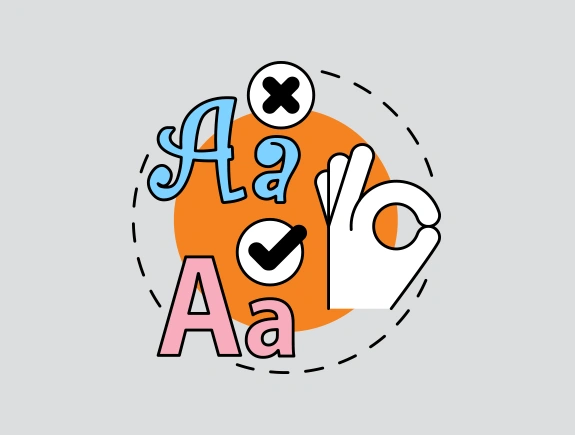The value of quality brand design cannot be underestimated, especially considering changes in consumer behavior and technological advancements. It’s well known how such design can facilitate the creation of a strong and reliable image among the target audience.
In an industry where everything changes rapidly, keeping pace can be challenging, especially when managing an expanding business and utilizing various channels for advertising and marketing. This is where the Brand Bible comes into play.
Many are now probably wondering: “What does the Brand Bible represent?” It’s a kind of manual for the brand that precisely defines how logos, colors, words, and other brand elements should always look and sound. The goal is to maintain consistency in branding across all communications and materials.
Below, we bring you a guide where we will acquaint you in more detail with the concept of the Brand Bible, as well as its elements. We’ll also provide you with tips that can be used to create such a guide for your brand.
What is a Brand Bible?
Essentially, the Brand Bible is a useful guide containing brand guidelines designed to maintain consistency across all communication channels, including your website, advertisements, social media profiles, and email. It also functions as a compass, ensuring that you stay aligned with the broader essence of your brand.
Within your Brand Bible, you’ll find everything that constitutes your company’s identity, including visual elements such as typography, logos, color palettes, and other resources, including tone of voice, as well as your vision and mission.
This comprehensive book of essential resources keeps everything in your organization that should be on the right track. Now that you understand what a Brand Bible is, let’s briefly look at the role it plays in the success of your business.
Who needs a Brand Bible?
The Brand Bible is an indispensable tool for any organization, regardless of its size and years of existence or just starting in business. Whether you’ve been in business for many years or just starting, the Brand Bible can be crucial in forming and maintaining a strong, recognizable, and trusted identity by customers.
When properly developed and implemented, the Brand Bible ensures that all teams within the organization share the same values regarding the brand identity, messages, and visual elements. Additionally, it helps you avoid potentially costly mistakes that could jeopardize your reputation or cause confusion among customers.
And if you’re just starting, although this may also be useful to those who have been in the market for some time, be sure to check out our checklist for brands of all sizes. It provides you with all the most important elements to pay attention to.
How does the Brand Bible lead to success?
Once upon a time, when compasses didn’t exist, sailors relied on the stars for navigation. In the business world, the Brand Bible plays a similar role, guiding the organization to success by maintaining brand consistency and recognizability.
This “guiding star” preserves the core values and personality of the brand, facilitating the transmission of a unique message to the target audience. It’s not just about rules; it’s also about safeguarding the heart and soul of the brand, guiding branding strategy, and connecting with the target audience, all of which contribute to business success.
Key differences between the Brand Bible and brand guidelines
Although often used interchangeably, “Brand Bible” and “brand guidelines” have subtle differences that make them unique yet related concepts. An explanation follows below.
Brand guidelines represent a set of precise rules and instructions dictating the visual and verbal identity of the brand. For example, you may notice that our website uses a specific shade of green and a certain font style on each page, including the logo.
On the other hand, the Brand Bible not only encompasses the rules from the brand guidelines but also provides deeper context and understanding of why and how those rules are applied. For instance, KFC uses a red color palette to evoke a sense of appetite and urgency, adapting to its nature of fast food.
Step-by-step: Creating a Brand Bible
As we know, to ensure brand consistency, maximize its recognition, and increase visibility, it’s crucial to have a comprehensive Brand Bible. However, according to some research, only about 10% of companies have a fully developed and documented Brand Bible. So, it’s time to collaborate with professionals in this field and create one for your brand, but until then, you can also apply some of our tips from the following section of the text.
Brand Definition
To begin defining your brand in the first part of the brand guide, you need to discuss who it’s intended for, what problems your product or service solves, and what sets it apart from other brands.
By understanding people’s needs and how your brand can help, you’ll find a unique place in the market. This is where the strengths of your brand shine the most. When you combine all these thoughts and ideas, you move from words to actions. Also, your mission becomes a powerful force that shapes your brand’s purpose and guides its activities.
Visual Brand Identity
The visual identity of the brand is like the face of your brand and includes how your brand name, logo design, colors, and fonts are presented. These visual brand elements should look the same and provide a clear picture of who you are, and what you believe in, and should be easily remembered.
When creating a visual brand identity, pay attention to these helpful tips:
- Choose colors that align with the personality and values of your brand, as colors can say a lot about what your brand represents.
- Then use fonts that are easy to read and match how your brand communicates.
- Also, use your logo in the same way everywhere, so people can always recognize it, and make sure it looks good in different sizes.
Need help creating an unforgettable visual brand identity? Contact us today. Our team will create it for you.
Brand Voice and Tone
The famous British journalist, Sir David Attenborough, is known for his unique and soothing voice. His ability to convey a wide range of emotions, even without facial expressions, makes him recognizable among viewers worldwide.
Just as Attenborough’s voice reflects authenticity and clarity, so should the brand’s voice. It’s important that it communicates effectively with the target audience, adapting its tone according to situations and desired emotions.
The primary goal of your brand’s communication is to be remembered. When words reflect the brand’s appearance, they help people remember your brand during and after interactions with you.
Application and Usage
Your Brand Bible should be like a guide with practical examples showing how the brand message, visual elements, and tone should be used in different situations. It’s a tool you design for everyone working in your organization if you want to maintain brand consistency among the team and brand resources, including marketing materials, product packaging, website, social media, and much more.
Pay attention to these few tips when creating your Brand Bible:
- Provide examples of how your logo should appear on business cards, signage, or packaging.
- Provide guidelines on how brand colors and fonts are used on different marketing materials.
- Show how to use the brand voice and tone in different situations.
Create your Brand Bible today
If you’ve reached the end of our blog, you probably recognize the key role the Brand Bible plays in business success. If you haven’t created yours yet, you’ll face challenges in maintaining coherence within the team as your business expands.
Creating a Brand Bible requires careful planning, but it’s worth the effort. If you need help, feel free to contact us. Our team of branding experts is here to assist you.













